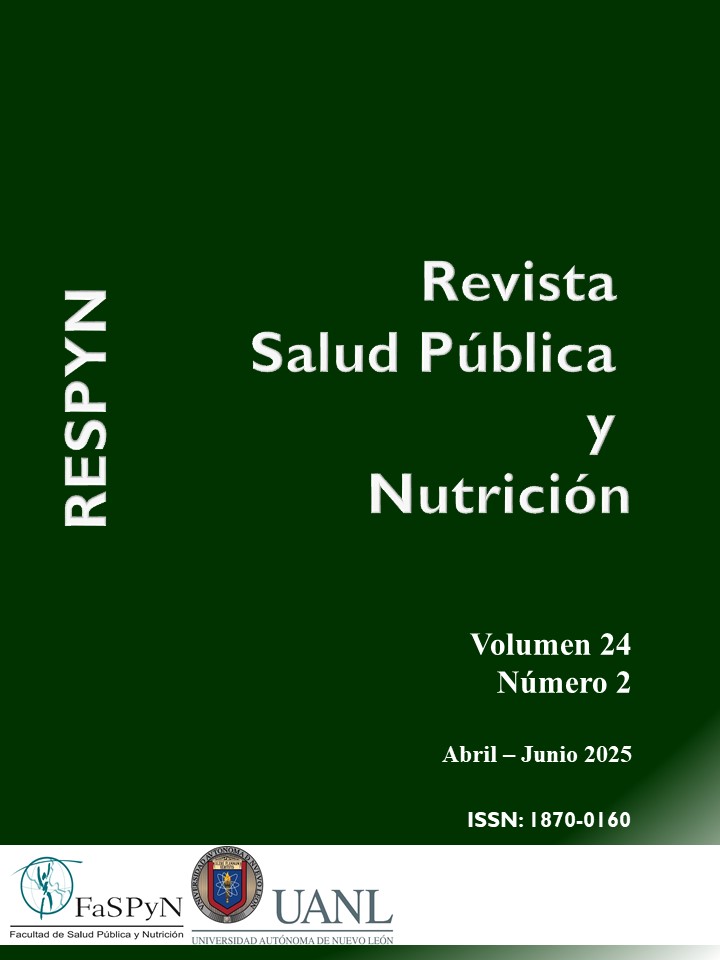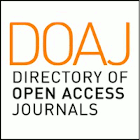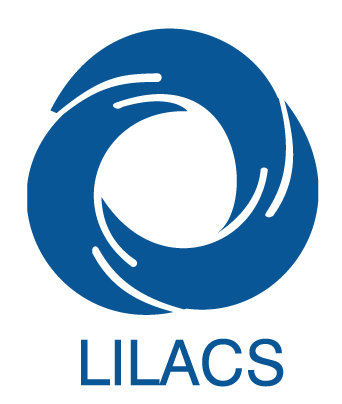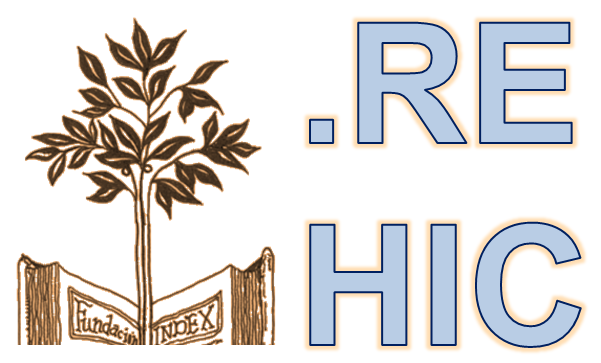Evaluation of consumption of a horchata analogue drink with alpha-linolenic acid in Honduran nursing mothers
DOI:
https://doi.org/10.29105/respyn24.2-851Keywords:
infant, breastfeeding, flax, femaleAbstract
Introduction: Essential fatty acids are key to maternal and infant health, but their consumption is limited. Objective: To evaluate in nursing mothers the consumption of a horchata analog drink (HAD) based on a powdered mixture of cashew, sesame, rice, ayote seed, sugar, cinnamon and flaxseed, to increase its content of apha-linolenic acid (ALA). Material and method: Descriptive study with 24 volunteer nursing mothers, with infants aged 1 to 3 months. They consumed HAD, previously sensorially evaluated, preparing 30 g of mixture (156 kcal/serving,2.2 g ALA) in 220 ml milk and/ or water for four weeks. Three educational sessions on breastfeeding (BF) and maternal-infant well-being. Data were collected on consumption, perceived effects on BF and maternal-infant well-being. Results: 96% of the mothers reported that they “liked” and “liked very much” the HAD. To prepare it, 42% used whole milk and 17% used water. 71% consumed it at breakfast/snack. 92% perceived an increase in breast milk production, 42% better mood, 54% more active babies. No adverse effects were reported. Conclusion: The HAD was favorably appreciated; it is recommended to validate it in maternal and infant health.
Downloads
References
Ahmed, B., Freije, A., Omran, A., Rondanelli, M., Marino, M., & Perna, S. (2023). Human Milk Fatty Acid Composition and Its Effect on Preterm Infants’ Growth Velocity. Children, 10(6), 939. https://doi.org/10.3390/children10060939 DOI: https://doi.org/10.3390/children10060939
Arikpo, D., Edet, E. S., Chibuzor, M. T., Odey, F., & Caldwell, D. M. (2018). Educational interventions for improving primary caregiver complementary feeding practices for children aged 24 months and under. The Cochrane database of systematic reviews, 5(5), CD011768. https://doi.org/10.1002/14651858.CD011768.pub2 DOI: https://doi.org/10.1002/14651858.CD011768.pub2
Barceló Labuena, A. M., Juste Giménez, J., Artal Rillo, M., García Magán, M., Durán Artigas, N., Herrera Ruiz, E. R. (2024). Lactancia materna en madres primerizas: Revisión sistemática. Revista Sanitaria de Investigación, 5(9). https://dialnet.unirioja.es/servlet/articulo?codigo=9906610.
Biesbroek ,S., Kok, F.J., Tufford, A.R., Bloem, M.W., Darmon, N., Drewnowski, A., Fan, S., Fanzo, J., Gordon, L.J., Hu, F.B., Lähteenmäki, L., Nnam, N., Ridoutt, B.G., Rivera, J., Swinburn, B., Veer, P.V. (2023). Toward healthy and sustainable diets for the 21st century: Importance of sociocultural and economic considerations. Proc Natl Acad Sci U S A. 120(26):e2219272120. https://doi.org/10.1073/pnas.2219272120 DOI: https://doi.org/10.1073/pnas.2219272120
CONACYT. (2006). NSO 67.45.01:06 “Mezcla para preparar bebida de horchata. Especificaciones”. http://www.puntofocal.gob.ar/notific_otros_miembros/slv82_t.pdf
De Kok, B., Moore, K., Jones, L., Vanslambrouck, K., Toe, L. C., Ouédraogo, M., Ganaba, R., De Pee, S., Bedford, J., Lachat, C., Kolsteren, P., & Isanaka, S. (2021). Home consumption of two fortified balanced energy protein supplements by pregnant women in Burkina Faso. Maternal and Child Nutrition, 17(3). https://doi.org/10.1111/mcn.13134 DOI: https://doi.org/10.1111/mcn.13134
FAO (Organización de las Naciones Unidas para la Agricultura y la Alimentación) & WHO (Organización Mundial de la Salud). (2019). Dietas saludables sostenibles: Principios rectores (1.ª ed., 44 págs.). FAO y OMS. https://doi.org/10.4060/ca6640es DOI: https://doi.org/10.4060/ca6640es
Figueroa-Damián, R., Beltrán-Montoya, J., Sosa, S. E. y, Reyes, E., Segura-Cervantes, E. (2013). Consumo de agua en el embarazo y la lactancia. https://www.redalyc.org/articulo.oa?id=423640341012
Golan, Y., Assaraf, Y.G. (2020). Genetic and Physiological Factors Affecting Human Milk Production and Composition. Nutrients.12(5):1500. https://doi.org/10.3390/nu12051500 DOI: https://doi.org/10.3390/nu12051500
Guttmacher, A.E., Collins, F.S.; Burke, W. (2002). Medicina genómica: pruebas genéticas. N. Engl. J. Med. 347 , 1867–1875. https://doi.org/10.1056/nejmra012240 DOI: https://doi.org/10.1056/NEJMoa012113
Hernández Santana, A., Bustillo Calidonio, Y., Lanza Aguilar, S. (2024). Estado nutricional y densidad mineral ósea de mujeres mayores de 20 años procedentes de El Salvador, Guatemala y Honduras. Actual. nutr, 81-88. https://doi.org/10.48061/SAN.2024.25.2.81
Hernandez-Santana, A., Motiño S., Enriquez, J.P., Lanza-Aguilar, S. (2021). Maternal Nutrition Status and Human Milk Composition of DHA and AA Fatty Acids in Breastfeeding Honduran Women. http://dx.doi.org/10.26420/austinjnutrmetab.2021.1109 DOI: https://doi.org/10.26420/austinjnutrmetab.2021.1109
Herrera, A. C., Hernández, A., & Espinoza, S. (2023). Desarrollo de una bebida tipo horchata en polvo con inclusión de linaza (Linum usitatissimum) para madres lactantes [Tesis de grado no publicada, 50 pp.]. Escuela Agrícola Panamericana Zamorano.
Lama, T. P., Moore, K., Isanaka, S., Jones, L., Bedford, J., De Pee, S., Katz, J., Khatry, S. K., LeClerq, S. C., & Tielsch, J. M. (2021). Compliance with and acceptability of two fortified balanced energy protein supplements among pregnant women in rural Nepal. Maternal and Child Nutrition, 18(2). https://doi.org/10.1111/mcn.13306 DOI: https://doi.org/10.1111/mcn.13306
Leroy, J. L., García-Guerra, A., García, R., Dominguez, C., Rivera, J., & Neufeld, L. M. (2008). The Oportunidades program increases the linear growth of children enrolled at young ages in urban Mexico. Journal of Nutrition, 138(4), 793–798. https://doi.org/10.1093/jn/138.4.793 DOI: https://doi.org/10.1093/jn/138.4.793
Luna-Torres, J.A., Camarillo-Nava, V.M., Vega-Mendoza, S. (2023). Factores de riesgo asociados al abandono de la lactancia materna en atención primaria. Revista mexicana de medicina familiar, 10(4), 143-150. Epub 24 de mayo de 2024.https://doi.org/10.24875/rmf.22000119 DOI: https://doi.org/10.24875/RMF.22000119
Ma, X., Nan, F., Liang, H., Shu, P., Fan, X., Song, X., Hou, Y., & Zhang, D. (2022). Excessive intake of sugar: An accomplice of inflammation. Frontiers in immunology, 13, 988481. https://doi.org/10.3389/fimmu.2022.988481 DOI: https://doi.org/10.3389/fimmu.2022.988481
Marangoni, F., Cetin, I., Verduci, E., Canzone, G., Giovannini, M., Scollo, P., Corsello, G., & Poli, A. (2016). Maternal Diet and Nutrient Requirements in Pregnancy and Breastfeeding. An Italian Consensus Document. Nutrients, 8(10), 629. https://doi.org/10.3390/nu8100629 DOI: https://doi.org/10.3390/nu8100629
Martínez García, R. M., Jiménez Ortega, A. I., Peral Suárez, Á., Bermejo López, L. M. y Rodríguez-Rodríguez, E. (2021). Importancia de la Nutrición Durante el Embarazo. Impacto en la Composición de la Leche Materna [Importance of nutrition during pregnancy. Impact on the composition of breast milk]. Nutrición hospitalaria, 37(2), 38–42. https://doi.org/10.20960/nh.03355 DOI: https://doi.org/10.20960/nh.03355
McDonald, C. M., Wessells, K. R., Stewart, C. P., Dewey, K. G., De Pee, S., Rana, R., Hafeez‐ur‐Rehman, H., Mwangi, M. N., & Hess, S. Y. (2024). Perinatal intervention strategies providing food with micronutrients to pregnant and breastfeeding women in low‐ and middle‐income countries: A scoping review. Maternal and Child Nutrition, 20(4). https://doi.org/10.1111/mcn.13681 DOI: https://doi.org/10.1111/mcn.13681
Nagel, E. M., Jacobs, D., Johnson, K. E., Foster, L., Duncan, K., Kharbanda, E. O., Gregg, B., Harnack, L., Fields, D. A., & Demerath, E. W. (2021). Maternal Dietary Intake of Total Fat, Saturated Fat, and Added Sugar Is Associated with Infant Adiposity and Weight Status at 6 mo of Age. The Journal of nutrition, 151(8), 2353–2360. https://doi.org/10.1093/jn/nxab101 DOI: https://doi.org/10.1093/jn/nxab101
National Institutes of Health. (2018). Ácidos Grasos Omega-3. https://ods.od.nih.gov/factsheets/Omega3FattyAcids-DatosEnEspanol/
Parikh, M., Maddaford, T. G., Austria, J. A., Aliani, M., Netticadan, T., Pierce, G. N. (2019). Dietary Flaxseed as a Strategy for Improving Human Health. Nutrients, 11(5), 1171. https://doi.org/10.3390/nu11051171 DOI: https://doi.org/10.3390/nu11051171
Parikh, M., Netticadan, T., Pierce, G.N. (2018). Flaxseed: Its bioactive components and their cardiovascular benefits. American Journal of Physiology. Heart and Circulatory Physiology, 314(2), H146-H159. https://doi.org/10.1152/ajpheart.00400.2017 DOI: https://doi.org/10.1152/ajpheart.00400.2017
Rios, M., Tinitana, F., Jarrín-V, P., Donoso, N., Romero-Benavides, J.C. (2017). «Horchata» drink in Southern Ecuador: Medicinal plants and people’s wellbeing. Journal of Ethnobiology and Ethnomedicine, 13(1), 18. https://doi.org/10.1186/s13002-017-0145-z DOI: https://doi.org/10.1186/s13002-017-0145-z
Sayres, S., Visentin, L. (2018). Breastfeeding: uncovering barriers and offering solutions. Curr Opin Pediatr. 30(4):591-596. https://doi.org/10.1097/mop.0000000000000647 DOI: https://doi.org/10.1097/MOP.0000000000000647
Trumbo, P., Schlicker, S., Yates, A.A., Poos, M. (2002). Dietary reference intakes for energy, carbohydrate, fiber, fat, fatty acids, cholesterol, protein, and amino acids. Journal of the American Dietetic Association, 102(11), 1621-1630. https://doi.org/10.1016/S0002-8223(02)90346-9 DOI: https://doi.org/10.1016/S0002-8223(02)90346-9
Zhou, Y., Zhu, X., Qin, Y., Li, Y., Zhang, M., Liu, W., Huang, H., & Xu, Y. (2019). Association between total water intake and dietary intake of pregnant and breastfeeding women in China: A cross-sectional survey. BMC Pregnancy and Childbirth, 19(1), 172. https://doi.org/10.1186/s12884-019-2301-z DOI: https://doi.org/10.1186/s12884-019-2301-z
Downloads
Published
How to Cite
Issue
Section
License
Copyright (c) 2025 Adriana Hernández Santana, Rocío Noemí Moncada García

This work is licensed under a Creative Commons Attribution 4.0 International License.
The rights of the work belong to the author or authors, however, by sending it for publication in the Public Health and Nutrition Magazine of the Faculty of Public Health and Nutrition of the Autonomous University of Nuevo León, they grant the right for its first publication in between electronic, and possibly, in print to the Public Health and Nutrition Magazine. The license used is the Creative Commons attribution, which allows third parties to use what is published whenever the authorship of the work is mentioned and the first publication that is in the Public Health and Nutrition Magazine. Likewise, the author or authors will take into account that it will not be allowed to send the publication to any other journal, regardless of the format. The authors will be able to make other independent and additional contractual agreements for the non-exclusive distribution of the version of the article published in the Public Health and Nutrition Magazine (e.g., institutional repository or publication in a book) provided they clearly state that The work was published for the first time in the Public Health Magazine, Magazine of the Faculty of Public Health and Nutrition of the Autonomous University of Nuevo León.














